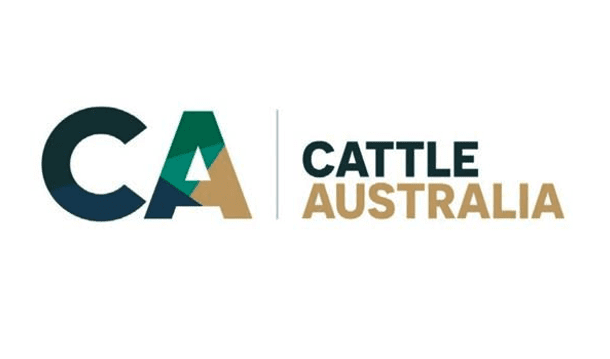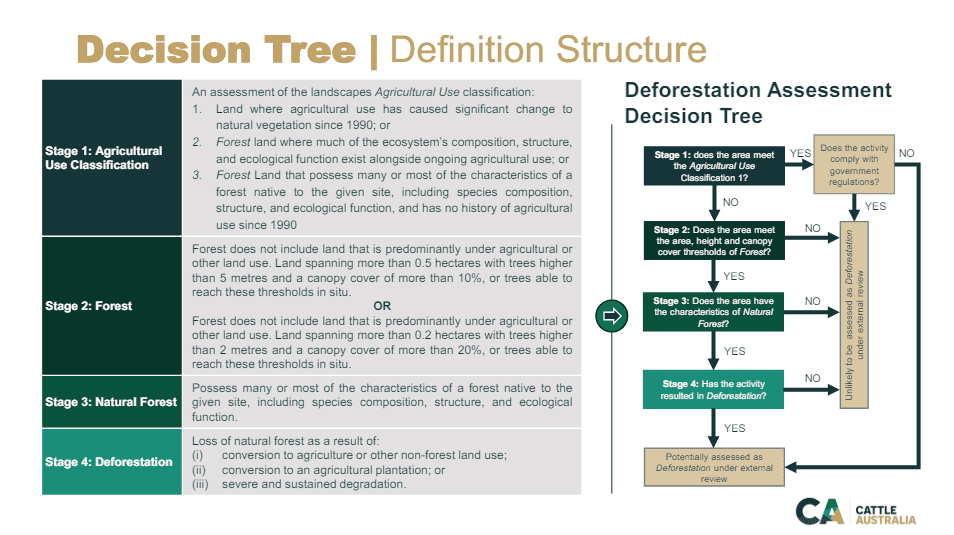CATTLE Australia has addressed some key questions about its definition of deforestation in the Australian context, highlighting how it is adapting international definitions of forest to Australian land management practices.
 The grass-fed industry’s peak lobby group gave a first look at its “land management commitment” and deforestation definition earlier this month, with submissions to its paper closing this Sunday.
The grass-fed industry’s peak lobby group gave a first look at its “land management commitment” and deforestation definition earlier this month, with submissions to its paper closing this Sunday.
In a webinar this week with more than 80 in attendance, CA chair Garry Edwards said the work was important for keeping market access to the European Union and some of the world’s biggest beef supply chains.
“The largest purchaser of beef in the world is McDonald’s and McDonald’s for some time has been communicating its desire to have deforestation-free supply chains,” Mr Edwards said.
“When you look at McDonald’s, it essentially takes the trim that could come off any animal from any producer in this country – whether it is grassfed or grainfed.”
CA’s land management commitment started with a roundtable with 50 industry stakeholders in Rockhampton and it has been engaging with producers, banks, supermarkets and environmental groups. Since then, it has come up with a deforestation definition that it hopes the supply chains will be able to use.
One of the sticking points with deforestation definitions is that it excludes agricultural land. CA has provided a series of case studies alongside the definition to demonstrate routine agricultural practices used in Australia and created a staged approach to defining deforestation it is calling the “deforestation assessment decision tree.” Agricultural land use is acknowledged at the top of the decision tree.
Mr Edwards said some of the groups CA have engaged with hold different interests and opinions to many in the beef industry.
“There are a lot of groups who would like to see us not cut down a single tree,” he said.
“Why we are including some of the groups that might have different opinions to us is because we want be able to understand their opinions so we can make informed responses.”
Why the 1990 baseline year?
Regrowth is a grey area in the deforestation definitions, with debate over the types of land that should be classified as “regenerated forest”. CA says regrowth that was last cleared before 1990 should come under the regenerated forest classification, among other criteria.
The 1990 baseline year has been criticised by the environmental lobby – including the World Wildlife Fund, the Australian Conservation Foundation, Greenpeace and the Wilderness Society – who have been calling it a loophole. Some of the groups have been campaigning for regrowth 15-years-or-older to be assessed as a “regenerated forest”.
In the webinar, Mr Edwards said the 1990 baseline year was in keeping with most state legislation.
“Under various different state forestry legislations, the landowner does have the right to harvest trees and vegetation that has grown up to the age of 35 years,” Mr Edwards said.
“Where possible we have linked this to scientific outcomes and we have sought to maintain the rights of landowners to take advantage of the value of the above ground elements, which are the trees and vegetation that form forests. In many cases they are valuable sources of income and part of business plans that people have had running for a long-time.
“There will be a lot of discussion about other groups that would like to see a shorter timeframes than that, but I think it is very important from an industry perspective to maintain the rights of landowners that might have been preserving timber and choosing to clear it at a later date.
“To impose limitations upon that, which is different to what is imposed on our own state forest and plantation management, would be unfair.”
Why not just use international definitions?
During the webinar CA chief executive officer Chris Parker said the organisation has been receiving plenty of questions about why it is not just adopting international definitions of deforestation – which excludes land predominantly used for agriculture.
Environmental consultant Ben Corry from Baringa Partners said it was about adapting the international definitions to Australian land management.
“We are using the same definitions as overseas but we are having to interpret them to be fit for purpose in Australia where we have different production systems,” Mr Corry said.
“There is not that clear difference between forest and agricultural use, so this work is trying to bridge that gap so the supply chains and financial institutions will accept it and it still meets the needs of producers.”
In some follow up points sent to Beef Central, CA said one international definition called the Accountability Framework Initiative classified agricultural land use as livestock raised on land with severe and sustained degradation.
“It is unlikely anyone in industry would endorse this definition as being an accurate demonstration of how livestock production is conducted in Australia,” CA said.
“While we understand the intent of the definition is to address the material change to native vegetation, it must be recognised not all of our livestock production has materially changed the environment, and therefore demonstrating this is also important, given the scale of our environment and property sizes.”
More case studies can be developed
CA has also been providing case studies to demonstrate routine land management practices – like regrowth clearing, clearing for infrastructure, weed control, drought fodder and bushfire recovery. The webinar heard that CA had been in touch with EU about the case studies and had received a positive response.
Presenters in the webinar were keen to point out that other case studies can be developed for the land management commitment.
Mr Corry was asked how the case studies dealt with woody encroachment.
“This is one where I would encourage the case study to be sent through and we can develop into a case study,” he said.
“We are not seeking to prevent people from undertaking practices they have historically done and that falls under classification one and meets legal requirements.”
- To look at CA’s information paper and provide feedback click here

